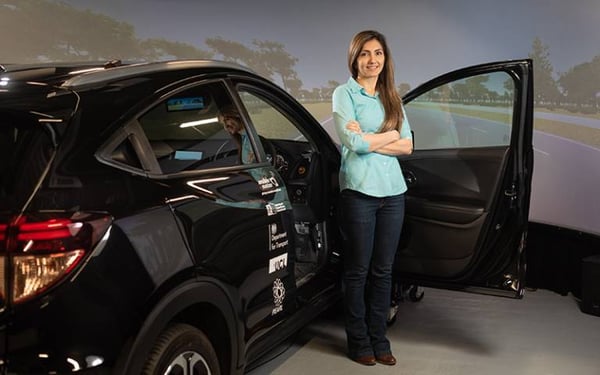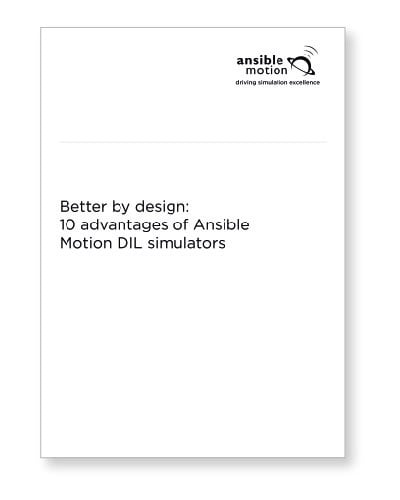 A newly developed robotic driving seat was recently showcased at the British Science Festival by UCL researchers, as part of ongoing efforts to increase public trust in highly automated vehicles.
A newly developed robotic driving seat was recently showcased at the British Science Festival by UCL researchers, as part of ongoing efforts to increase public trust in highly automated vehicles.
The driving seat, developed by scientists from UCL’s Intelligent Mobility group, signals to drivers in highly automated vehicles that human input is required and the vehicle operator needs to take back control. Its development is part of a project exploring communication between automated vehicles and human drivers.

Supported by the Engineering and Physical Sciences Research Council and Ansible Motion, the IM@UCL Group developed a driving simulator based on Ansible Motion’s Sigma series Driver-in-the-Loop platform that is capable of understanding the situational awareness of human drivers. Situational awareness is the ability to perceive, understand, and effectively respond to one's situation.
The setup captures the driver’s eye movements and measures their brain activity, which tells the onboard computer whether the driver has high or low situational awareness. This informs the car if the driver can safely take back control of the vehicle.
Professor Bani Anvari (UCL Civil, Environmental & Geomatic Engineering), Director of IM@UCL, says:
My vision is to enable humans to trust and fully exploit the benefits of highly automated and autonomous vehicles in the future through new technology. For example, through the detection of situational awareness in combination with the robotic driving seat. Autonomous vehicles are likely to be one of the first robots that many people engage with on a daily basis. In order for the public to fully trust this technology, we need to make sure that there is effective communication between the car and human. I’m looking forward to seeing how this technology advances and I’m also excited to showcase this for the public during the British Science Festival. Academia, industry and policymakers have to work together to gain the trust of road users, and I am pleased that my work can contribute to this.
Read the full story on the IM@UCL website.



